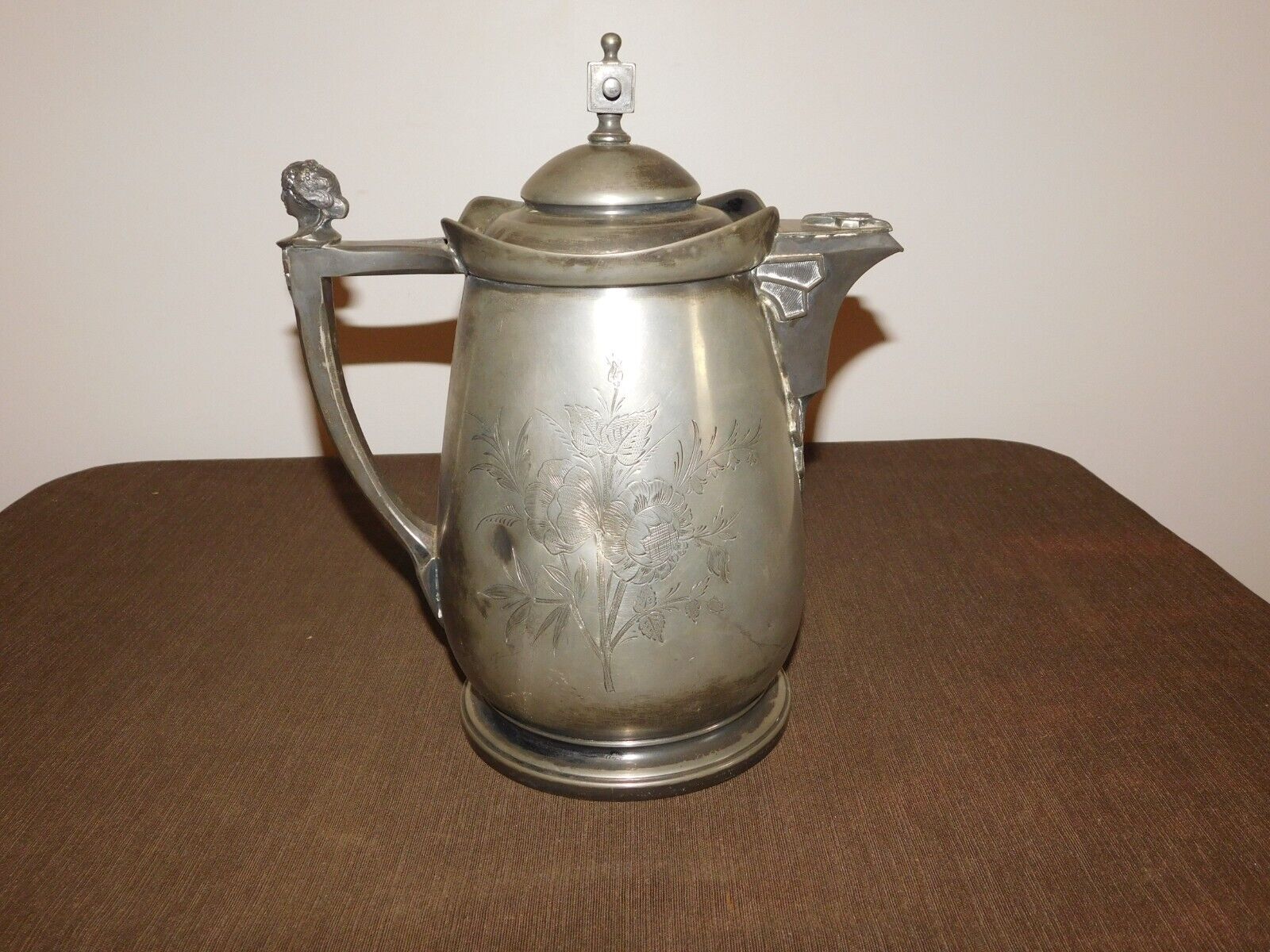-40%
CHARTER OAK Style Samovar Silverplate Roswell Gleason 1850-1871 NEW PRICE OFFER!
$ 630.95
- Description
- Size Guide
Description
We are pleased to offer a fabulous silverplated samovar made in the style of the Charter Oak pattern by Roswell Gleason of Dorchester, Massachusetts, sometime between 1850 and 1871.Roswell Gleason, 1799 - 1887, began his enterprise in Massachusetts as a tinsmith, and branched into pewter and Brittaniaware. In the 1850s, with the encouragement of Daniel Webster and by studying in England with his son, he opened the first silver plating workshop in America. Some of his earlier pewter pieces as well as the dining froom from his mansion "Lilacs" are on the display in the Boston Museum of Fine Arts, and other of his pieces appear in the Brooklyn Museum and the Yale University Library. He is also noted for his patented cruet and castor sets shaped as cathedrals, which open by a turning mechanism located at the top.
This piece has all the distinctive features of the "Charter Oak" holloware pattern, made famous by Meriden Brittania Co. and 1847 Rogers Bros, who patented Charter Oak flatware in 1907. Since Mr. Gleason ceased operations in 1871, this piece was clearly made before that date. The maker's mark of Gleason, a Massachusetts Indian, is located on the bottom of the burner (see photo). This mark is authenticated in Dorothy Rainwater's authoritative text on Maker's Marks, 3rd Ed., p 101.
The acorn finial on the top of the samovar is exactly the same as those on the Charter Oak tea sets made by Meriden and Rogers, and the chasing as well as the twig and leaf feet are further indicative of the Charter Oak pattern (is this where Rogers found the inspiration for the pattern?). It seems highly likely that Mr Gleason, a notable and wealthy man, would have been as affected as anyone else in New England upon the demise and falling of the Great Charter Oak in Hartford, Connecticut in 1856. This event may have been his inspiration for the creation of this piece.
His designs changed with the Victorian clientele he garnered and his work became more opulent and less simplistic than the forms he used in his earlier pewter and Brittania ware works. We believe this to be one of his finest silverplate works, worthy to stand beside the items already on display in various museums.
The piece has not been polished but we guarantee there is no plate wear or loss. The only flaw is a tiny piece is broken off of one foot (see photo). We have the piece and it will be included with the purchase. A silversmith should be able to reattach it to the new owner's satisfaction. The maker's mark can be seen at the bottom of the burner which is stamped as a Walkers Safety Lamp, Pat July 1850 and May '53. The samovar is built to tilt forward to allow for an easier flow of coffee into the spigot at the front of the piece. The spigot is in perfect working condition.
This is a true collector's piece, reflecting the workmanship of a master artist. It incorporates a popular, natural motif with beautiful styling. Nothing like this has been seen on ebay for years so don't miss out on the opportunity to add it to your collection.
Size:
It stands 14" tall to the top of the handle and the front legs are 8 1/2" apart.
Shipping:
Buyer to pay a flat fee of .00 for shipping.
Please visit Hi Ho Silverplate, our ebay store, for lots of silverplate including flatware, holloware and other antiques - check out our other items! Visit our sister store, DameDamaskAntiques, for antique linens for your table, bedroom and bath.




















